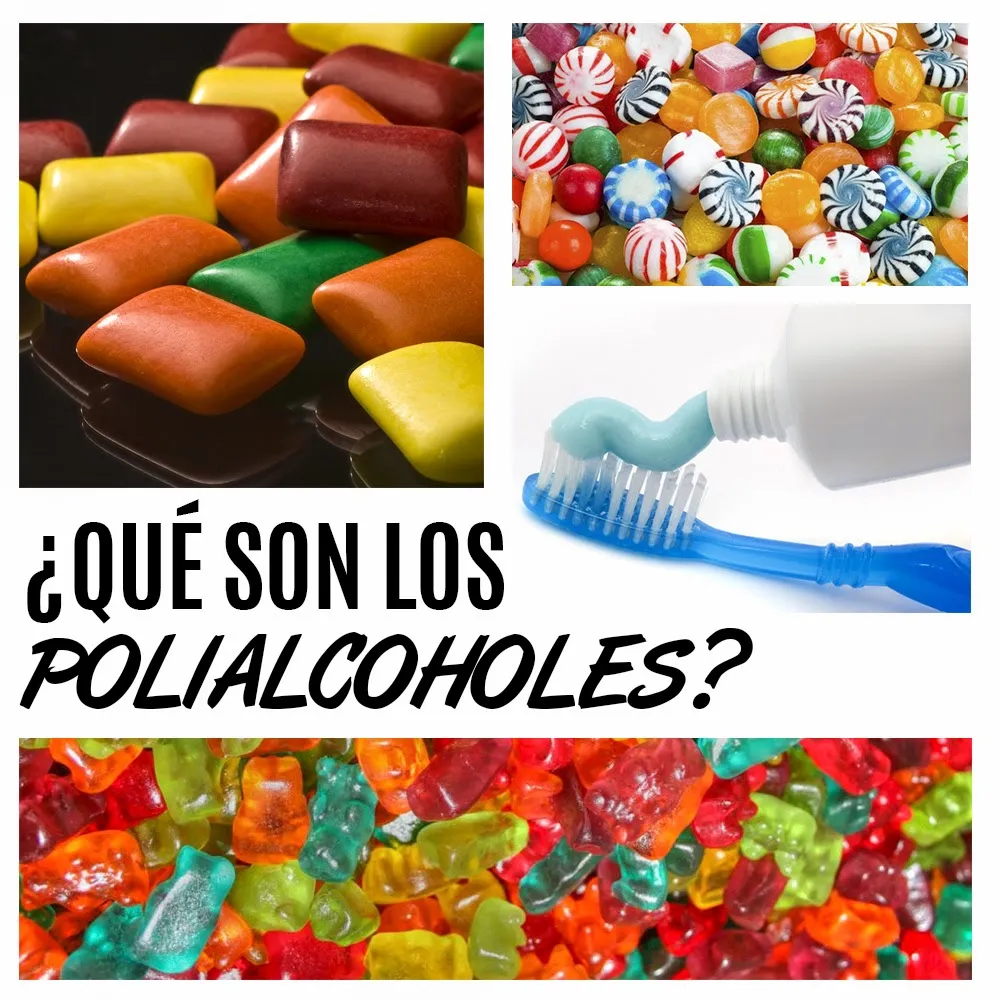Polialcohols (also called alcoholic sugars) are characterized by being a family of organic chemical compounds with a sweet taste.These chemically compounds are considered hydrogenated carbohydrates whose carbonyl group (aldehyde, ketone, reducing sugar) has been reduced to a primary or secondary hydroxyl group (that is to say to an alcohol).
Alcoholic sugars have the general formula H (Hcho) N+1h, while sugars have H (Hcho) NHCO.They are used in numerous food applications such as sweeteners in sugar substitution (Sucrosa).Polialcohols have very low caloric content and their little fermentabiliad causes caries attacks, it is for this reason why they are in gum, dentifical pastes, etc.
Alcoholic sugars are absorbed incompletely in the bloodstream from the small intestine, which causes minimal changes of blood glucose, or at least it does so on a smaller scale than sugar.This property makes them sweeteners suitable for diabetics or people diagnosed with a hypocaloric diet.
However, like other substances that are not completely digested, their excessive consumption produces sensation of swelling, diarrhea and flatulence due to its low absorption in the small intestine.Some individuals present these paintings even in small doses.
With their continued use, people acquire a degree of tolerance to alcoholic sugars.As an exception, it is known that erythritol is absorbed in the small intestine and is excreted by urine, in this way this polyalcohol does not have these side effects on moderate consumption.
count HC (carbohydrates) of polyalcohols
Due to their incomplete absorption, they can use the following tips to estimate the amount of carbohydrates from a food that contains more than 5 grams of sugar alcohols.
If a food has more than 5 grams of sugar alcohols:
- It remains ½ of the grams of sugar alcohol from the amount of total carbohydrates.
- Tell the remaining grams of carbohydrates in your meal plan.
Advantages
These sugars alcohols do not require insulin to metabolize and therefore, they do not raise blood glucose in the body, but produce a much slower response.For that reason, they are usually useful in food for diabetics or for people with high blood triglycerides.
In addition, they have less careful power than common sugars, that is, they do not greatly favor caries formation, as they are less fermented by mouth bacteria.
Disadvantages
The amount to consume is limited to less than 50 grams per day, because these sugars alcohols have difficulty being absorbed and therefore, if consumed in excess they can cause gastrointestinal discomfort, diarrhea and flatulence.
Manitol is metabolized through the liver where it is transformed into fructose, so it can raise blood glucose unlike the rest of the polyalcohols if there is no insulin.In addition, it can favor the increase in triglycerides if consumed in excess.Although its economic cost is higher than that of sorbitol and xylitol so it is used less in the food industry.
All are sugars, and although they metabolize by different routes, they provide 4 kcal per gram.It is not proven that they can reduce themselves because of the body's difficulty to absorb them.Then, they are not useful for thinning or reducing dietary calories, but not to sharply raise blood glutemia.
As long as we have the precaution of not abusing foods that contain them, alcohols sugars can be ingested daily and we must remember that they are not sweetening without calories, although they do not raise theglucose quickly in blood.
Polyols labeling
The names of individual sugar alcohols will be on the list of ingredients of any product that contains them.They will be included in the amount of carbohydrates on the label, either in the total or in a separate line for sugar alcohols.
If the product has the “sugarless” or “added sugar” label, the manufacturer must demonstrate the sugar alcohol count separately.


